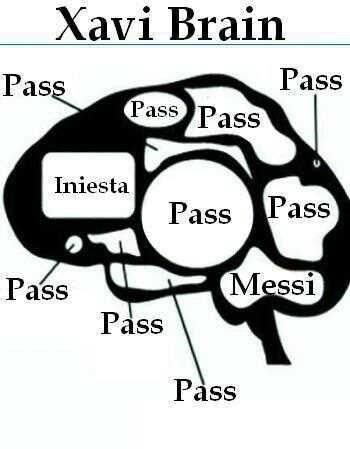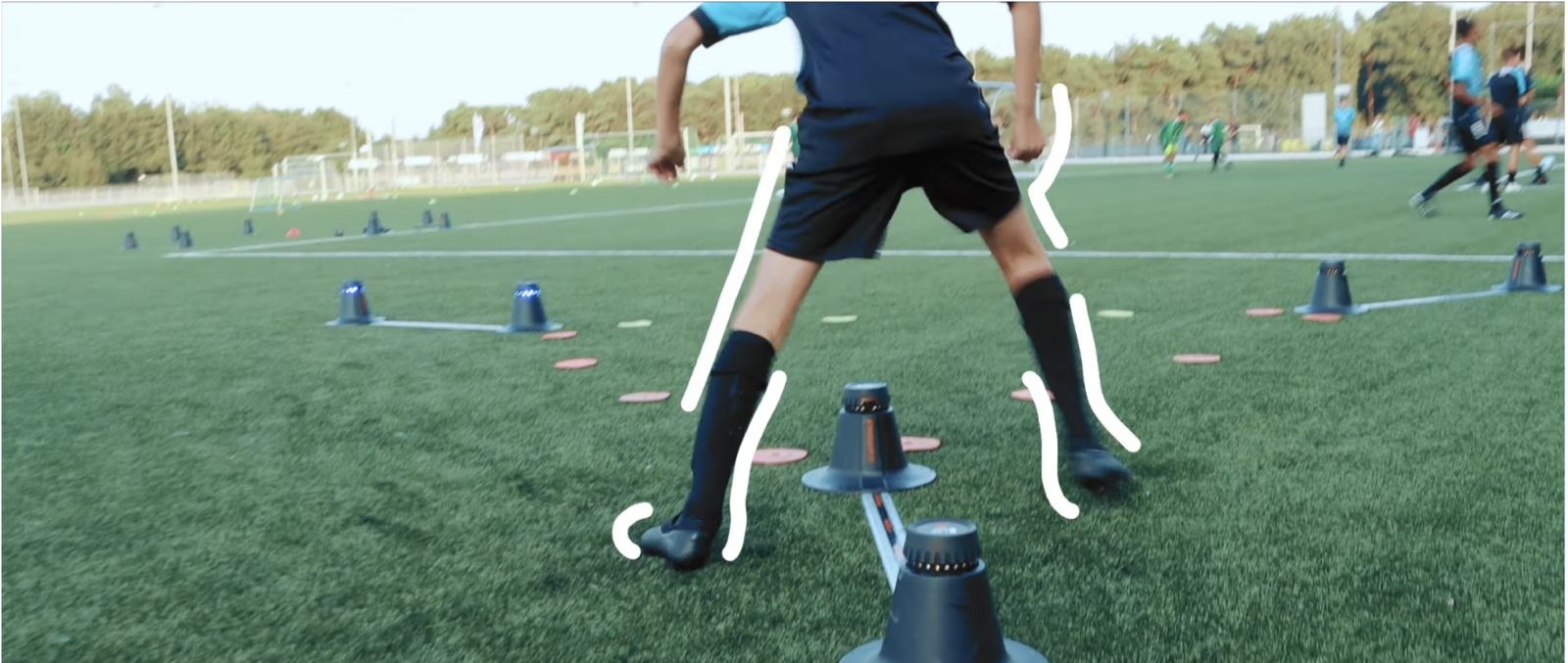Agility in focus
SmartGoals - SkillGames, testing day in Hungary organised by SportLander
Agility and its added-value is becoming increasingly important in today's elite sports. According to some experts, this could be the key ability, that may play a major role in shaping an athlete into an elite player.
First of all, it is important to define what agility really is! Agility, broadly defined, a rapid whole-body movement with change of velocity or direction in response to a stimulus - as Sheppard and Young put it in their 2006 journal paper. It is important not to confuse this with changes of direction, as they follow a predetermined trajectory (Clarke 1959) and thus do not test the decision-making ability that is integral to agility.
“Agility is a rapid whole-body movement with change of velocity or direction in response to a stimulus.”
In team sports, it is the will of the more agile player that prevails in key moments. Following a turn, a jump, an acceleration, a well-timed body feint, a player may immediately gain advantage over his opponent. Furthermore it is very often these intense micro-movements that precede goal-scoring situations.
According to Young's 2015 research, agility as a skill is built on three distinct pillars: technical, physical and cognitive.
The technical part includes the physical characteristics of the individual (height, weight), running technique, the shift of centre of gravity during movement, and foot positioning and -work.
The physical pillar includes muscular strength, core strength, reactive strength. These are the skills developed by strength and conditioning coaches, rehabilitation coaches, physiotherapists and other professionals. Their main objectives are to develop more efficient sports movements, efficient use of energy, the elimination of muscular imbalances, avoidance of injuries, and maintenance and long-term preservation of good health of the athlete.
The next pillar is the cognitive part, which has been gaining more and more attention lately. It includes speed and accuracy of decision making, recognition and identification of the right stimuli (recognising important information in a game situation and discarding less important ones). It is also the ability to see through a given pattern, game situation, to anticipate, as well is the knowledge and "reading" of the game.
According to Nebojsa's study, based on the results of Trecori-test of reactive agility in underage footballers it can be clearly distinguished between elite, sub-elite and amateur players. Furthermore, positioning and decision-making skills are identified by many as key factors in talent management.
According to this, it is imperative to address each pillar separately and to develop a sport-specific and a post-specific programme.
When it comes to the physical part, it is advised to place more emphasis on the strength of the muscles around the hips (LPHC), on lateral movements, jumps and landings. For the intense micromovements, efficient accelerations and decelerations, following the more basic exercies we may choose different progressions. After the 'softer' changes of direction (in both directions) and trajectorial runs (Figure 8 runs), place great emphasis on sharper, steeper changes of direction, and also on increasing the speed of the changes of direction. Finally, in order to optimise our return-to-pitch programme, we, we also need to develop cognitive skills.
Well-designed rehabilitation programmes start with injured athletes working in a controlled environment, focusing on specific exercises and improving their movement. At the same time, rehabilitation coaches keep in mind that the athlete needs to return to "chaos", to real-game-like situations where the movements they have practised need to be performed sharply: quickly and accurately. They prepare the athlete accordingly, using a variety of tools during rehabilitation, creating a variety of situations (cognitive tasks - simple questions, passive defenders, improving decision-making, improving concentration, peripheral vision, virtual reality).
There are many ways to improve cognitive skills, but it is important to keep in mind who your target group is, what options are available and what you want to achieve. We also need to remember the principle of progression.
As already mentioned in the definition of agility, it is essential to have a stimulus (trigger) which based on a player must act, decide and then perform a movement. There can be several types of stimuli used, such as auditory and visual stimuli for example, or even a mix between the two.
This simple task could be a game of mirror for junior athletes for example. This requires two players, one of whom, the leader of the task, moves in a small area, in any direction, at any speed, and his partner has to follow their movement. According to experts, the reaction to human movement is the most authentic when talking about agility. The best players watch their opponents' movements and make their decisions accordingly.
In addition, many professional sports clubs use a variety of tools specifically designed to improve agility. One such tool, SmartGoals, a technology widely used by football clubs, is a popular tool for youth training. The interactive cones act as 'lighted up gate' between which, when a player or ball passes through, another pair of cones in the system flashes up, as the cones in the system 'communicate' with each other. The cones can be arranged in any desired shape or height, and the phone app can be used to apply various settings and measure the results. A similar exercise can be performed with different aids, such as a tennis ball as a visual stimulus, or whistles, claps or whistles for auditory impact.
By developing agility, we will not only be able to move faster, but we will also improve our awareness and control of our body movements, develop our kinesthetic ability and reduce the risk of injury.
In the video below, Xavi's world-class skills and abilities are highlighted. Let it be his ability to recognise and 'read' game situations, his sense of pace, decision-making speed or even his overall agility.
Could these be the qualities that are essential in modern football? Many experts think so!
Young Xavi’s scouting report:
he following interesting facts can be gleaned from the report:
Balance: Average
....
Speed: Average
...
Positioning: Perfect. Without a doubt hismost outstanding quality. He is always where he needs to be and helps his teammates with his positioning a lot.
...written about the 14-year-old Xavi in 1994 at the La Masia academy.
If you want to learn more about SmartGoals and how it can help you train agility and cognitive abilities visit our website at www.smartgoals.nl or reach out to us at info@smartgoals.nl
References:
Chelladurai, P., Yuhasz, M. S., & Sipura, R. (1977). The Reactive Agility Test. Perceptual and Motor Skills, 44(3_suppl), 1319–1324. https://doi.org/10.2466/pms.1977.44.3c.1319
Clarke, H. E. (1959). Application of measurement to health and physical education. Englewood Cliffs, NJ: Prentice Hall.
It’s time to rethink your agility training by Ivan Jukić https://fitforfutbol.com/2017/08/its-time-to-rethink-your-agility-training-by-ivan-jukic/
The original scouting report on 14-year-old Xavi Hernandez https://www.marca.com/en/football/barcelona/2019/11/22/5dd7b617268e3ef3218b4635.html
Inglis, Paul & Bird, Stephen. (2016). Reactive agility tests: Review and practical applications.. Journal of Australian Strength and Conditioning. 24. 57-64.
Kannekens R, Elferink-Gemser MT, Visscher C. Positioning and deciding: key factors for talent development in soccer. Scand J Med Sci Sports. 2011 Dec;21(6):846-52. doi: 10.1111/j.1600-0838.2010.01104.x. Epub 2010 Mar 11. PMID: 22126715.
Oliver Faude, Thorsten Koch & Tim Meyer (2012): Straight sprinting is the most frequent action in goal
Paul, Darren & Akenhead, Richard. (2017). Agility Training: A Potential Model for the Reduction and Rehabilitation of Acl Injury. Strength and Conditioning Journal. 40. 1. 10.1519/SSC.0000000000000361.
Pojskic H, Åslin E, Krolo A, Jukic I, Uljevic O, Spasic M, Sekulic D. Importance of Reactive Agility and Change of Direction Speed in Differentiating Performance Levels in Junior Soccer Players: Reliability and Validity of Newly Developed Soccer-Specific Tests. Front Physiol. 2018 May 15;9:506. doi: 10.3389/fphys.2018.00506. PMID: 29867552; PMCID: PMC5962722.
Situations in professional football, Journal of Sports Sciences, DOI:10.1080/02640414.2012.665940
Trajković, Nebojša; Sporiš, Goran; Krističević, Tomislav; Madić, Dejan M.; Bogataj, Špela. 2020. "The Importance of Reactive Agility Tests in Differentiating Adolescent Soccer Players" Int. J. Environ. Res. Public Health 17, no. 11: 3839. https://doi.org/10.3390/ijerph17113839
Trecroci A, Milanović Z, Rossi A, Broggi M, Formenti D, Alberti G. Agility profile in sub-elite under-11 soccer players: is SAQ training adequate to improve sprint, change of direction speed and reactive agility performance? Res Sports Med. 2016 Oct-Dec;24(4):331-340. doi: 10.1080/15438627.2016.1228063. Epub 2016 Sep 3. PMID: 27593436.
Young, Warren & Dawson, Brian & Henry, Greg. (2015). Agility and Change-of-Direction Speed are Independent Skills: Implications for Training for Agility in Invasion Sports. International Journal of Sports Science and Coaching. 10. 159-169. 10.1260/1747-9541.10.1.159.





